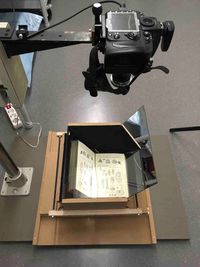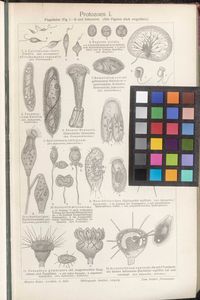Reprography of historic book covers and illustrations
In 2018, my old friend Walter Wilkes, who taught typography at the Technische Universität Darmstadt, told me about his project on book culture in the nineteenth century. He was working on the typographic aspects and Eva-Maria Hanebutt-Benz on cover design and illustration. The publication was to be illustrated and they were looking for someone to photograph the reproductions. I promised to take over this part. The book was published by the Maximilian Society at the end of 2019. For this publication I made about 150 illustrations of bindings and at least as many illustrations of graphics.
First challenge - background erasing the book covers
Most of the book covers were partly in leather, partly in calico or calico imitating textured paper. In addition, most bore embossed gold decorations. I wanted these materials to be vividly but neatly rendered. That is, the gold embossing had to be experienced as gold homogeneously over the entire surface, and I wanted the book block to appear shadow-free in the image.
A brief consideration shows that conventional studio lighting cannot achieve both at the same time. Bringing out the material surfaces through appropriate lighting is possible. The shadows of the book body could then be eliminated afterwards by background erasing in Photoshop. The latter sounds simple. But the books were almost 200 years old and often damaged at the edges. For example, fine threads, like hairs, frayed out of the edges, or the edge had finest indentations, where the binding material was easily recognizable. Preserving these fine details in background erasing takes an immense amount of time. In view of the 150 books, I decided to solve the problem in a different way.
If the book is placed on a background that is brighter than the brightest part of the object, the shadows can be effaced with a suitable exposure that removes the background by brightening it up. For this purpose, I built a light box that, similar to an integrating sphere, allows to back-illuminate the book block to be photographed with controllable, completely diffuse white light of the same color temperature as the top-illumination.
Forgot to mention: I decided to use normal, portable flash units for lighting, which I synchronize partly by radio link and partly with photocells. Because their light-emitting surface is only a few centimeters large, it is somewhat more difficult to reproduce the gold embossing homogeneously, but the light allows a better control of the rendering of the subtle textures of the cover materials and its artisanry.
Second challenge - reproduction of illustrations without flipping open the book
Old book covers may crack when opened. So the reproduction of book pages have to be made with the book almost closed. For this purpose, the so-called Wolfenbüttel book mirror was invented. With this device, the book only has to be opened 45°. Since I did not have access to such a device, I decided to build one myself and started sketching. Immediately it was clear that ghost images will appear on the surfaces of the pressure glass, so an anti-reflective coating is to be applied. To avoid ghost images on the deflection mirror, it would have to be designed as a surface mirror. These glasses would have a format of 300 mm x 600 mm, which means costs of several thousand Euros and several weeks delivery time. Project end?
The sketch also exhibited that with the Wolfenbüttel design, the camera would have to shoot into the setup from a slanting angle. That did not suit me at all, because in this case I would also have had to build a special, adjustable camera guide that ran at that angle. I wanted to stick with my vertical, good old Linhof copy stand.
Based on the sketch, I briefly calculated: If the book could be opened just a little more, namely 60°, the virtual, mirror image would lie parallel to the ground, and I could photograph from above with the Linhof stand. But I immediately realized more: The optical path light source to book to camera now hits the contact pressure glass plate and the deflection mirror almost exactly at Brewster's angle (vividly described here)! Thus, the disturbing reflections are completely polarized and can be suppressed with a polarizing filter in front of the lens.
So that means I can realize the device with normal window- as well as mirror glass, which reduces the costs massively and also the delivery time shrinks to one day at my favorite glass store downtown. So all I have to do is put a polarizing filter in front of the lens and off I go (linear or circular polarizing filter, both work; but it has to be a good one! I have some from Hoya and Nikon in my stash). I built the glass mounts from 16mm MDF boards and two threaded rods. All glass edges should be blackened with paint.
If the illumination direction is precisely adjusted, perfectly reflection-free reproductions of a page can be made close to 2-3 mm of the book fold, i.e. practically completely; cf. test image on the left. Naturally, the raw reproduction is inverted. But this can be corrected in Photoshop with one click.
Third challenge - Removing printing screens
The representation of images has been a major issue since the beginning of printing. In the nineteenth century, people were looking for methods that could be integrated into the processes of printing, processes that at that time were already quite advanced. The big problem was the representation of halftones. The first halftone processes were developed. So, among the illustrations in this project, there were quite a few with halftone images. Halftones in printing are achieved by screening. The reproduction of a screened image inevitably leads to moiré structures in the result. At all means this had to be avoided.
More: >>>>



